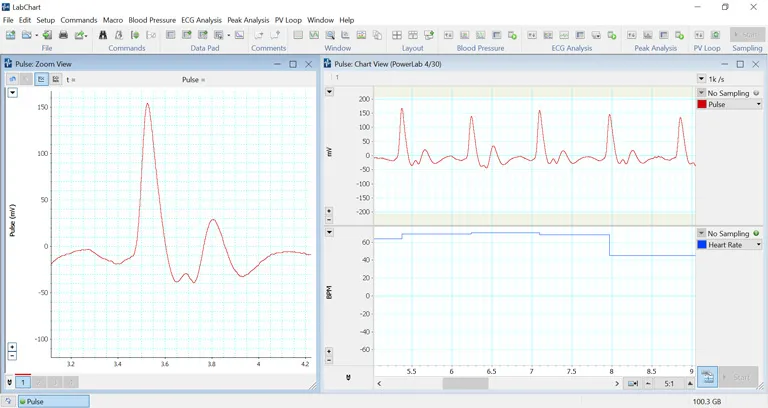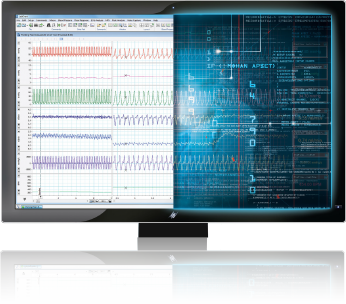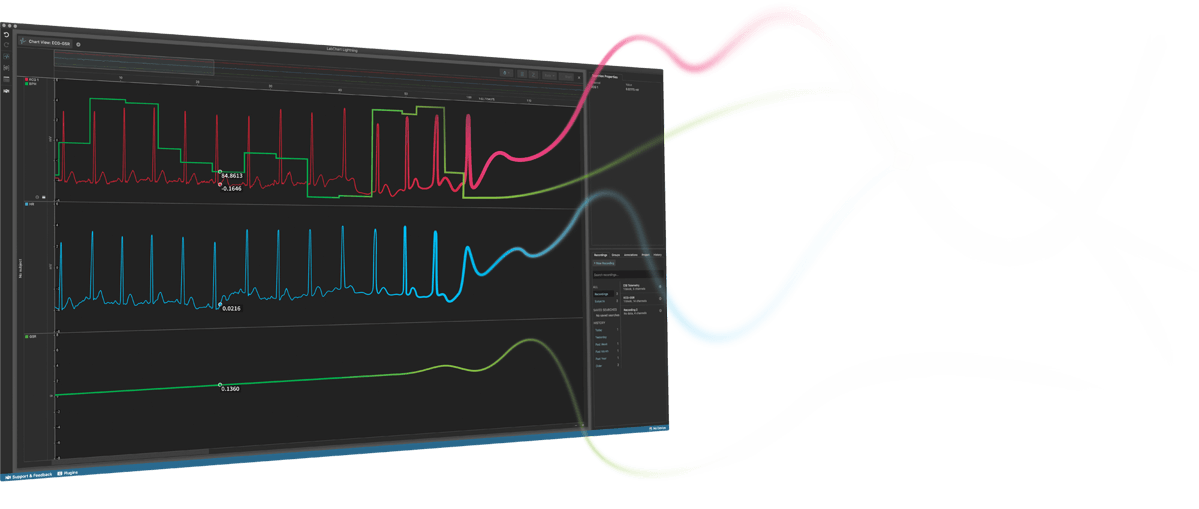A pulse signal may be derived from various sources; a finger pulse transducer, IR plethysmograph, non-invasive pulse tonometer, pulse oximeter, microphone, or any transducer detecting changes in blood flow in localized circulation. A pulse signal can be used as a simple means of detecting heart rate, or utilized in a more advanced analysis approach such as pulse transit time. Higher quality pulse signals, for example, those deriving from a non-invasive pulse tonometer, may be used as an indicator of arterial stiffness.
Pulse
A recorded pulse signal can be derived from a number of transducers, intended to detect the pulsatile flow of blood into the central or peripheral arteries. Typically, this is used as an indicator of heart rate, or as a timing signal indicative of pulse transit time.



All your analysis in one place
LabChart software is designed specifically for life science data and provides up to 32 channels for data display and analysis options that are powerful and easy to use. With auto-recognition of ADI and LabChart Compatible hardware, multi-window views, one touch recording, simultaneous recording from multiple devices, specialized preconfigured settings, easy sharing options and an interface that can be customized to show only the features you want to use.
Features and Add-Ons
Additional acquisition and analysis options to support your Pulse analysis:


